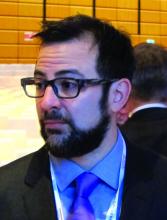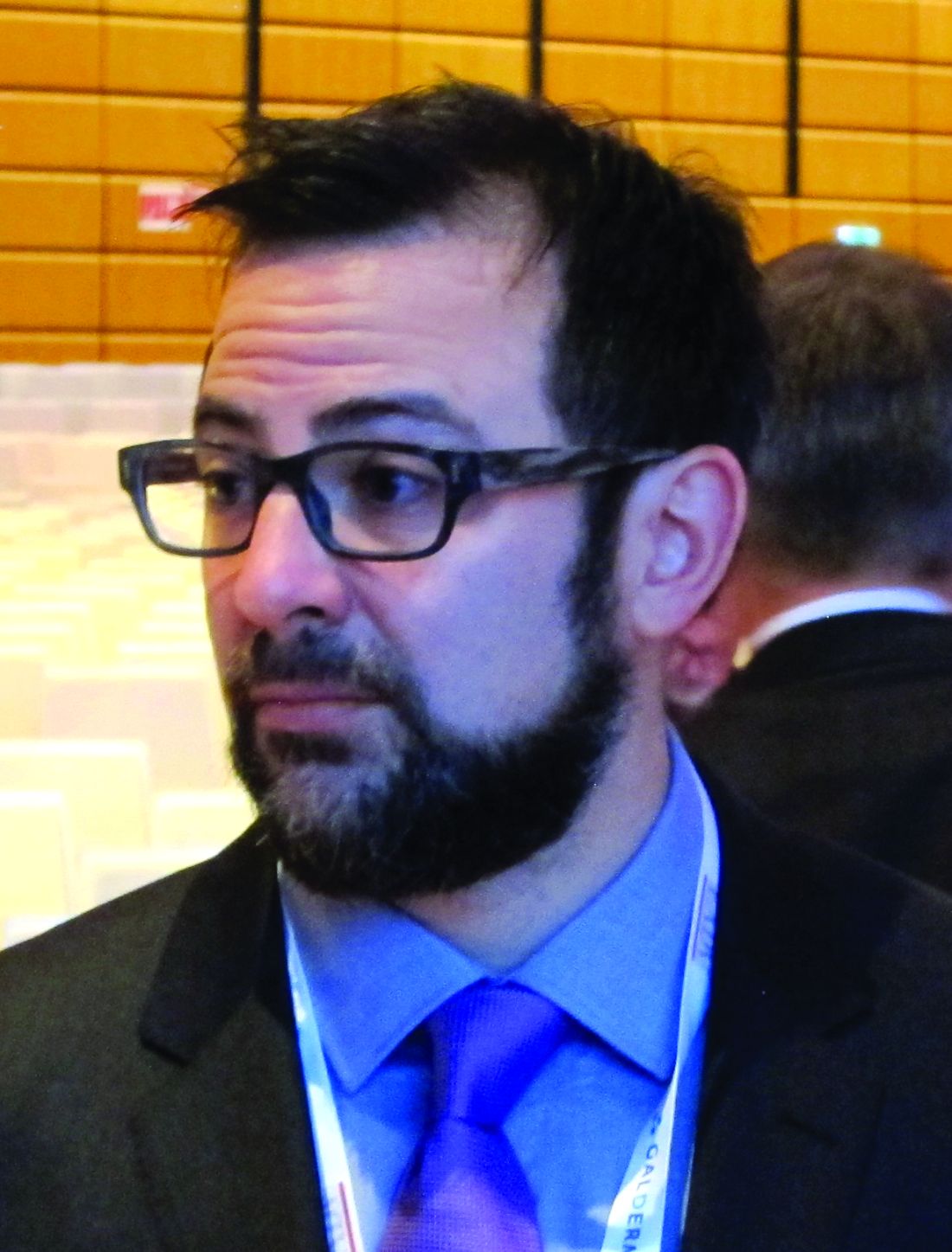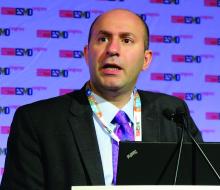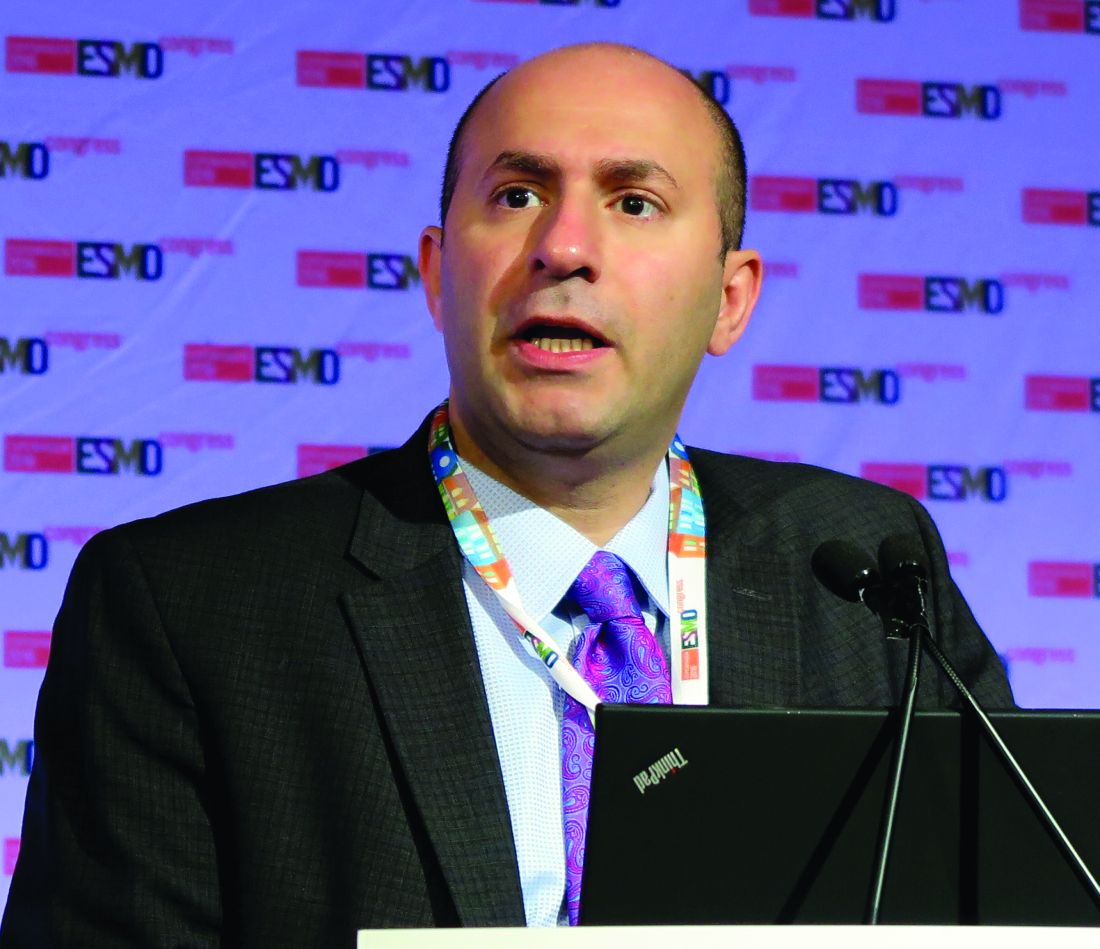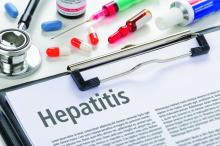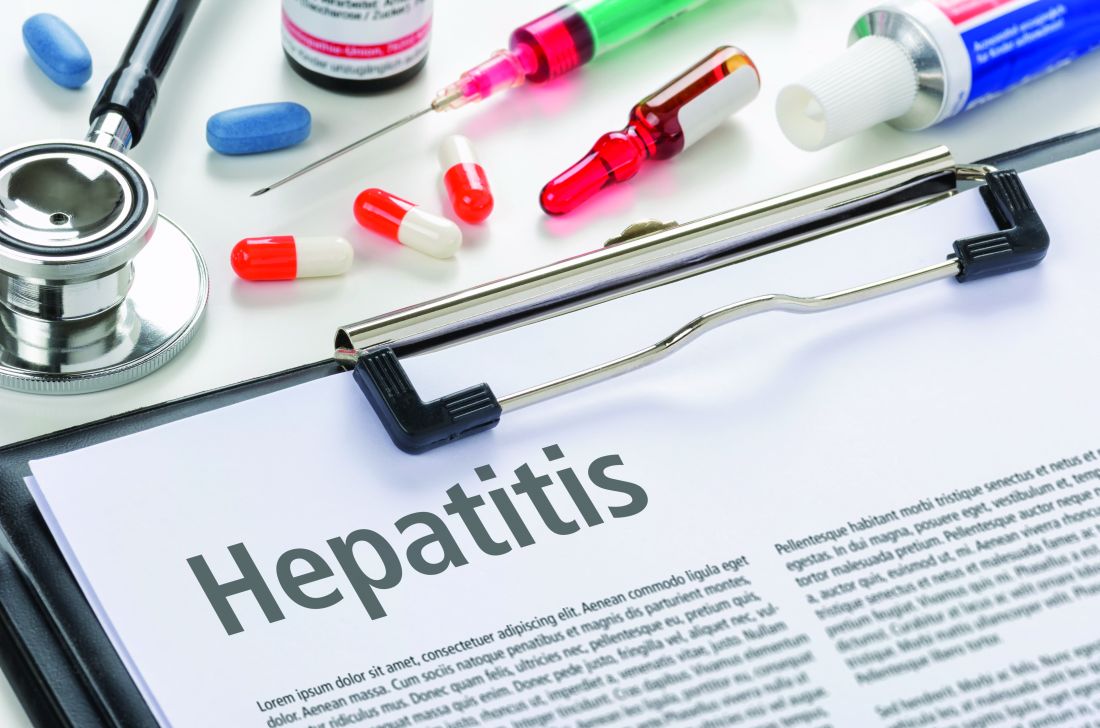User login
Strengthen Your Role as a Practice Administrator with SHM’s Mentor Program
- Model 1: Mentors/Mentees. Less experienced administrators will be paired with seasoned professionals to gain more experience or exposure.
- Model 2: Buddy System. Administrators at any level of expertise or experience will be paired with a peer so they both can learn from each other.
Interested in being a mentor or mentee for the 2017 program? Complete the online form at www.hospitalmedicine.org/pamentor used to match you up to other individuals who have similar needs for improvement.
- Model 1: Mentors/Mentees. Less experienced administrators will be paired with seasoned professionals to gain more experience or exposure.
- Model 2: Buddy System. Administrators at any level of expertise or experience will be paired with a peer so they both can learn from each other.
Interested in being a mentor or mentee for the 2017 program? Complete the online form at www.hospitalmedicine.org/pamentor used to match you up to other individuals who have similar needs for improvement.
- Model 1: Mentors/Mentees. Less experienced administrators will be paired with seasoned professionals to gain more experience or exposure.
- Model 2: Buddy System. Administrators at any level of expertise or experience will be paired with a peer so they both can learn from each other.
Interested in being a mentor or mentee for the 2017 program? Complete the online form at www.hospitalmedicine.org/pamentor used to match you up to other individuals who have similar needs for improvement.
Become a Fellow in Hospital Medicine
The application is open through November 30, with a decision on or before December 31, 2016. Apply now and learn how you can join other hospitalists who have earned this exclusive designation and recognition at www.hospitalmedicine.org/fellows.
The application is open through November 30, with a decision on or before December 31, 2016. Apply now and learn how you can join other hospitalists who have earned this exclusive designation and recognition at www.hospitalmedicine.org/fellows.
The application is open through November 30, with a decision on or before December 31, 2016. Apply now and learn how you can join other hospitalists who have earned this exclusive designation and recognition at www.hospitalmedicine.org/fellows.
Lebrikizumab opens new door in atopic dermatitis therapy
VIENNA – The success of the interleukin-13 blocker lebrikizumab in the TREBLE trial provides a new avenue in the treatment of moderate-to-severe atopic dermatitis.
“This is another promising molecule in atopic dermatitis,” Eric L. Simpson, MD, declared in presenting the phase II TREBLE data at the annual congress of the European Academy of Dermatology and Venereology.
Interleukin-13 is known to be an especially potent promoter of type 1, IgE-mediated inflammation. For this reason, lebrikizumab is also under investigation in the treatment of severe asthma, where large phase III trials have been completed, as well as in idiopathic pulmonary fibrosis.
In mouse models of AD, topical anti-IL-13 therapy markedly reduces skin inflammation. This observation helped provide the rationale for investigating lebrikizumab as a novel therapy for AD.
TREBLE was a double-blind, dose-ranging study involving 209 adults with moderate-to-severe AD despite intensive topical corticosteroid therapy. Indeed, enrollment was restricted to patients who still had moderate or severe disease after 2 weeks of triamcinolone 0.1% cream BID. Continuation of that twice-daily topical steroid regimen was mandatory for the full 12-week study period that followed. Patients were randomized 1:1:1:1 to triamcinolone 0.1% BID plus either a single 125-mg subcutaneous dose of lebrikizumab at week 0, a single 250-mg dose of the biologic, 125 mg every 4 weeks, or placebo injections.
At baseline, after their 2 weeks of topical steroid monotherapy, patients had a median Eczema Area and Severity Index (EASI) score of 22 and a median SCORing Atopic Dermatitis (SCORAD) of about 56. They averaged 36 years of age. Slightly over 40% of their body surface area was affected.
The primary endpoint in TREBLE was the percentage of patients who achieved at least a 50% reduction from baseline on the EASI, or EASI 50. A dose-response effect was apparent: the EASI 50 rate was 62.3% in patients on placebo plus daily topical steroids, 69.2% with a single 125-mg dose of lebrikizumab, 69.8% with a single 250-mg dose, and 82.4% with 125 mg of lebrikizumab at weeks 0, 4, 8, and 12. Only the group with monthly dosing of the biologic plus daily triamcinolone 0.1% BID had an EASI 50 response rate significantly better than the controls on placebo plus topical steroid therapy.
A key secondary endpoint was the SCORAD 50 response. The rate was 26.4% in the control group, 34.6% in patients who received one 125-mg dose of lebrikizumab, 47.2% in those who got a single 250-mg dose, and 51% with monthly dosing. The SCORAD 50 rate was significantly greater than placebo in the latter two lebrikizumab arms.
The EASI 75 rate was significantly greater than placebo plus triamcinolone only in the group on monthly lebrikizumab plus topical steroids.
The EASI 50 and 75 response rates in the group on 125 mg of lebrikizumab every 4 weeks was still climbing with no plateau evident when the trial ended at 12 weeks. This suggests greater benefit might be achieved with longer treatment duration and/or a higher dosage, Dr. Simpson observed.
Turning to safety issues, he pointed out that the total number of adverse events and serious adverse events were similar across all four treatment arms. Herpes infections occurred in 2%-6% of patients who received lebrikizumab but in no controls. There was also a nonsignificant trend for more cases of conjunctivitis in the groups that received the biologic.
Audience member Andrew Blauvelt, MD, rose to take issue with the study design.
“This study is almost an advertisement for not using topical steroids in a biologic trial for atopic dermatitis. I think it just confuses everything. It especially doesn’t make sense when one of the inclusion criteria is inadequate control with topical steroids. Shouldn’t we be doing monotherapy trials in the new era of biologics for atopic dermatitis?” commented Dr. Blauvelt, president of the Oregon Medical Research Center in Portland.
Dr. Simpson replied that when TREBLE was designed, the thinking was that in real-world clinical practice, physicians often prescribe a biologic for AD on top of topical therapy. The goal was to conduct a trial that mimics that situation. That being said, he agreed with Dr. Blauvelt’s critique.
“I think we’re realizing that topical steroids have a very strong effect, especially if you use them all the way through a trial or ad lib,” he said. “Topical steroids bring too many confounders. If you can remove potent topical steroid therapy I think you’re going to have a clearer result.”
“We’re not where psoriasis is,” Dr. Simpson added. “We don’t have any standardized methodologies in atopic dermatitis clinical trials yet, but I think we’re getting there.”
The TREBLE trial was sponsored by Genentech/Roche. Dr. Simpson reported serving as an investigator for and consultant to that organization and numerous other pharmaceutical companies.
VIENNA – The success of the interleukin-13 blocker lebrikizumab in the TREBLE trial provides a new avenue in the treatment of moderate-to-severe atopic dermatitis.
“This is another promising molecule in atopic dermatitis,” Eric L. Simpson, MD, declared in presenting the phase II TREBLE data at the annual congress of the European Academy of Dermatology and Venereology.
Interleukin-13 is known to be an especially potent promoter of type 1, IgE-mediated inflammation. For this reason, lebrikizumab is also under investigation in the treatment of severe asthma, where large phase III trials have been completed, as well as in idiopathic pulmonary fibrosis.
In mouse models of AD, topical anti-IL-13 therapy markedly reduces skin inflammation. This observation helped provide the rationale for investigating lebrikizumab as a novel therapy for AD.
TREBLE was a double-blind, dose-ranging study involving 209 adults with moderate-to-severe AD despite intensive topical corticosteroid therapy. Indeed, enrollment was restricted to patients who still had moderate or severe disease after 2 weeks of triamcinolone 0.1% cream BID. Continuation of that twice-daily topical steroid regimen was mandatory for the full 12-week study period that followed. Patients were randomized 1:1:1:1 to triamcinolone 0.1% BID plus either a single 125-mg subcutaneous dose of lebrikizumab at week 0, a single 250-mg dose of the biologic, 125 mg every 4 weeks, or placebo injections.
At baseline, after their 2 weeks of topical steroid monotherapy, patients had a median Eczema Area and Severity Index (EASI) score of 22 and a median SCORing Atopic Dermatitis (SCORAD) of about 56. They averaged 36 years of age. Slightly over 40% of their body surface area was affected.
The primary endpoint in TREBLE was the percentage of patients who achieved at least a 50% reduction from baseline on the EASI, or EASI 50. A dose-response effect was apparent: the EASI 50 rate was 62.3% in patients on placebo plus daily topical steroids, 69.2% with a single 125-mg dose of lebrikizumab, 69.8% with a single 250-mg dose, and 82.4% with 125 mg of lebrikizumab at weeks 0, 4, 8, and 12. Only the group with monthly dosing of the biologic plus daily triamcinolone 0.1% BID had an EASI 50 response rate significantly better than the controls on placebo plus topical steroid therapy.
A key secondary endpoint was the SCORAD 50 response. The rate was 26.4% in the control group, 34.6% in patients who received one 125-mg dose of lebrikizumab, 47.2% in those who got a single 250-mg dose, and 51% with monthly dosing. The SCORAD 50 rate was significantly greater than placebo in the latter two lebrikizumab arms.
The EASI 75 rate was significantly greater than placebo plus triamcinolone only in the group on monthly lebrikizumab plus topical steroids.
The EASI 50 and 75 response rates in the group on 125 mg of lebrikizumab every 4 weeks was still climbing with no plateau evident when the trial ended at 12 weeks. This suggests greater benefit might be achieved with longer treatment duration and/or a higher dosage, Dr. Simpson observed.
Turning to safety issues, he pointed out that the total number of adverse events and serious adverse events were similar across all four treatment arms. Herpes infections occurred in 2%-6% of patients who received lebrikizumab but in no controls. There was also a nonsignificant trend for more cases of conjunctivitis in the groups that received the biologic.
Audience member Andrew Blauvelt, MD, rose to take issue with the study design.
“This study is almost an advertisement for not using topical steroids in a biologic trial for atopic dermatitis. I think it just confuses everything. It especially doesn’t make sense when one of the inclusion criteria is inadequate control with topical steroids. Shouldn’t we be doing monotherapy trials in the new era of biologics for atopic dermatitis?” commented Dr. Blauvelt, president of the Oregon Medical Research Center in Portland.
Dr. Simpson replied that when TREBLE was designed, the thinking was that in real-world clinical practice, physicians often prescribe a biologic for AD on top of topical therapy. The goal was to conduct a trial that mimics that situation. That being said, he agreed with Dr. Blauvelt’s critique.
“I think we’re realizing that topical steroids have a very strong effect, especially if you use them all the way through a trial or ad lib,” he said. “Topical steroids bring too many confounders. If you can remove potent topical steroid therapy I think you’re going to have a clearer result.”
“We’re not where psoriasis is,” Dr. Simpson added. “We don’t have any standardized methodologies in atopic dermatitis clinical trials yet, but I think we’re getting there.”
The TREBLE trial was sponsored by Genentech/Roche. Dr. Simpson reported serving as an investigator for and consultant to that organization and numerous other pharmaceutical companies.
VIENNA – The success of the interleukin-13 blocker lebrikizumab in the TREBLE trial provides a new avenue in the treatment of moderate-to-severe atopic dermatitis.
“This is another promising molecule in atopic dermatitis,” Eric L. Simpson, MD, declared in presenting the phase II TREBLE data at the annual congress of the European Academy of Dermatology and Venereology.
Interleukin-13 is known to be an especially potent promoter of type 1, IgE-mediated inflammation. For this reason, lebrikizumab is also under investigation in the treatment of severe asthma, where large phase III trials have been completed, as well as in idiopathic pulmonary fibrosis.
In mouse models of AD, topical anti-IL-13 therapy markedly reduces skin inflammation. This observation helped provide the rationale for investigating lebrikizumab as a novel therapy for AD.
TREBLE was a double-blind, dose-ranging study involving 209 adults with moderate-to-severe AD despite intensive topical corticosteroid therapy. Indeed, enrollment was restricted to patients who still had moderate or severe disease after 2 weeks of triamcinolone 0.1% cream BID. Continuation of that twice-daily topical steroid regimen was mandatory for the full 12-week study period that followed. Patients were randomized 1:1:1:1 to triamcinolone 0.1% BID plus either a single 125-mg subcutaneous dose of lebrikizumab at week 0, a single 250-mg dose of the biologic, 125 mg every 4 weeks, or placebo injections.
At baseline, after their 2 weeks of topical steroid monotherapy, patients had a median Eczema Area and Severity Index (EASI) score of 22 and a median SCORing Atopic Dermatitis (SCORAD) of about 56. They averaged 36 years of age. Slightly over 40% of their body surface area was affected.
The primary endpoint in TREBLE was the percentage of patients who achieved at least a 50% reduction from baseline on the EASI, or EASI 50. A dose-response effect was apparent: the EASI 50 rate was 62.3% in patients on placebo plus daily topical steroids, 69.2% with a single 125-mg dose of lebrikizumab, 69.8% with a single 250-mg dose, and 82.4% with 125 mg of lebrikizumab at weeks 0, 4, 8, and 12. Only the group with monthly dosing of the biologic plus daily triamcinolone 0.1% BID had an EASI 50 response rate significantly better than the controls on placebo plus topical steroid therapy.
A key secondary endpoint was the SCORAD 50 response. The rate was 26.4% in the control group, 34.6% in patients who received one 125-mg dose of lebrikizumab, 47.2% in those who got a single 250-mg dose, and 51% with monthly dosing. The SCORAD 50 rate was significantly greater than placebo in the latter two lebrikizumab arms.
The EASI 75 rate was significantly greater than placebo plus triamcinolone only in the group on monthly lebrikizumab plus topical steroids.
The EASI 50 and 75 response rates in the group on 125 mg of lebrikizumab every 4 weeks was still climbing with no plateau evident when the trial ended at 12 weeks. This suggests greater benefit might be achieved with longer treatment duration and/or a higher dosage, Dr. Simpson observed.
Turning to safety issues, he pointed out that the total number of adverse events and serious adverse events were similar across all four treatment arms. Herpes infections occurred in 2%-6% of patients who received lebrikizumab but in no controls. There was also a nonsignificant trend for more cases of conjunctivitis in the groups that received the biologic.
Audience member Andrew Blauvelt, MD, rose to take issue with the study design.
“This study is almost an advertisement for not using topical steroids in a biologic trial for atopic dermatitis. I think it just confuses everything. It especially doesn’t make sense when one of the inclusion criteria is inadequate control with topical steroids. Shouldn’t we be doing monotherapy trials in the new era of biologics for atopic dermatitis?” commented Dr. Blauvelt, president of the Oregon Medical Research Center in Portland.
Dr. Simpson replied that when TREBLE was designed, the thinking was that in real-world clinical practice, physicians often prescribe a biologic for AD on top of topical therapy. The goal was to conduct a trial that mimics that situation. That being said, he agreed with Dr. Blauvelt’s critique.
“I think we’re realizing that topical steroids have a very strong effect, especially if you use them all the way through a trial or ad lib,” he said. “Topical steroids bring too many confounders. If you can remove potent topical steroid therapy I think you’re going to have a clearer result.”
“We’re not where psoriasis is,” Dr. Simpson added. “We don’t have any standardized methodologies in atopic dermatitis clinical trials yet, but I think we’re getting there.”
The TREBLE trial was sponsored by Genentech/Roche. Dr. Simpson reported serving as an investigator for and consultant to that organization and numerous other pharmaceutical companies.
AT THE EADV CONGRESS
Key clinical point:
Major finding: Of atopic dermatitis patients randomized to 125 mg of lebrikizumab every 4 weeks on top of twice-daily potent topical steroids, 82% experienced at least a 50% reduction in Eczema Area and Severity Index scores at 12 weeks, compared with 62% on the same topical steroid regimen plus placebo injections.
Data source: The TREBLE trial was a phase II, double-blind, placebo-controlled, 12-week study including 209 adults with moderate-to-severe atopic dermatitis inadequately controlled by intensive topical steroid therapy.
Disclosures: The study was sponsored by Genentech/Roche. The presenter reported serving as an investigator for and consultant to that organization and numerous other pharmaceutical companies.
ADT may increase dementia risk in prostate CA
Prostate cancer patients treated with androgen deprivation therapy are more than twice as likely as those who were not to develop dementia, according to a review of 9,272 prostate cancer cases at Stanford (Calif.) University.
Almost 8% of the 1,826 men treated with androgen deprivation therapy (ADT), a mainstay against prostate cancer, were diagnosed with dementia at 5 years, versus 3.5% of the 7,446 men not treated with ADT (JAMA Oncol. 2016 Oct 13. doi: 10.1001/jamaoncol.2016.3662).
“Our study extends previous work supporting an association between use of ADT and Alzheimer disease and suggests that ADT may more broadly affect neurocognitive function,” said the investigators, led by Kevin Nead, MD, formerly at Stanford but now a radiation oncology resident at the University of Pennsylvania, Philadelphia.
New-onset senile dementia, vascular dementia, frontotemporal dementia, and Alzheimer dementia were linked to ADT in both a propensity score-matched analysis (HR, 2.17; 95% CI, 1.58-2.99; P < .001) and multivariate analysis (adjusted HR, 2.21; 95% CI, 1.72-2.83; P < .001). The results held up when Alzheimer disease, just 30% of the 314 dementia cases, was excluded.
Men with at least 12 months of ADT had the greatest increased risk of dementia (HR, 2.36; 95% CI, 1.64-3.38; P < .001), suggesting a dose-response relationship; men on ADT who were at least 70 years old had the lowest cumulative probability of not developing dementia.
The link, the team said, is biologically plausible. Androgens have a role in neuron health and growth, and testosterone analogues have neuroprotective effects. Testosterone may be converted to estrogen, which is also neuroprotective. Low testosterone levels and ADT, meanwhile, have been shown to increase the risk of cardiometabolic diseases, which increase the risk of dementia.
The analyses controlled for age at prostate cancer diagnosis; race; smoking status; use of antiplatelet, anticoagulant, antihypertensive, and statin medications; and histories of cardiovascular disease, type 1 or 2 diabetes, stroke, and malignant neoplasms.
The men were treated at Stanford from 1994-2013. ADT patients tended to be older than their peers (70 versus 66 years), less likely to white (54% versus 60%), more likely to have smoked (44% versus 38%), and more likely to have other health problems.
More than 20 medications in the study were used for ADT, including leuprolide, goserelin, and triptorelin. Data were collectedd from electronic health records, and included diagnostic codes, medication lists, and clinical notes.
The work was funded by the National Institutes of Health. The senior author, Nigam Shah, PhD, has patents pending on the data-mining methods used in the study.
Prostate cancer patients treated with androgen deprivation therapy are more than twice as likely as those who were not to develop dementia, according to a review of 9,272 prostate cancer cases at Stanford (Calif.) University.
Almost 8% of the 1,826 men treated with androgen deprivation therapy (ADT), a mainstay against prostate cancer, were diagnosed with dementia at 5 years, versus 3.5% of the 7,446 men not treated with ADT (JAMA Oncol. 2016 Oct 13. doi: 10.1001/jamaoncol.2016.3662).
“Our study extends previous work supporting an association between use of ADT and Alzheimer disease and suggests that ADT may more broadly affect neurocognitive function,” said the investigators, led by Kevin Nead, MD, formerly at Stanford but now a radiation oncology resident at the University of Pennsylvania, Philadelphia.
New-onset senile dementia, vascular dementia, frontotemporal dementia, and Alzheimer dementia were linked to ADT in both a propensity score-matched analysis (HR, 2.17; 95% CI, 1.58-2.99; P < .001) and multivariate analysis (adjusted HR, 2.21; 95% CI, 1.72-2.83; P < .001). The results held up when Alzheimer disease, just 30% of the 314 dementia cases, was excluded.
Men with at least 12 months of ADT had the greatest increased risk of dementia (HR, 2.36; 95% CI, 1.64-3.38; P < .001), suggesting a dose-response relationship; men on ADT who were at least 70 years old had the lowest cumulative probability of not developing dementia.
The link, the team said, is biologically plausible. Androgens have a role in neuron health and growth, and testosterone analogues have neuroprotective effects. Testosterone may be converted to estrogen, which is also neuroprotective. Low testosterone levels and ADT, meanwhile, have been shown to increase the risk of cardiometabolic diseases, which increase the risk of dementia.
The analyses controlled for age at prostate cancer diagnosis; race; smoking status; use of antiplatelet, anticoagulant, antihypertensive, and statin medications; and histories of cardiovascular disease, type 1 or 2 diabetes, stroke, and malignant neoplasms.
The men were treated at Stanford from 1994-2013. ADT patients tended to be older than their peers (70 versus 66 years), less likely to white (54% versus 60%), more likely to have smoked (44% versus 38%), and more likely to have other health problems.
More than 20 medications in the study were used for ADT, including leuprolide, goserelin, and triptorelin. Data were collectedd from electronic health records, and included diagnostic codes, medication lists, and clinical notes.
The work was funded by the National Institutes of Health. The senior author, Nigam Shah, PhD, has patents pending on the data-mining methods used in the study.
Prostate cancer patients treated with androgen deprivation therapy are more than twice as likely as those who were not to develop dementia, according to a review of 9,272 prostate cancer cases at Stanford (Calif.) University.
Almost 8% of the 1,826 men treated with androgen deprivation therapy (ADT), a mainstay against prostate cancer, were diagnosed with dementia at 5 years, versus 3.5% of the 7,446 men not treated with ADT (JAMA Oncol. 2016 Oct 13. doi: 10.1001/jamaoncol.2016.3662).
“Our study extends previous work supporting an association between use of ADT and Alzheimer disease and suggests that ADT may more broadly affect neurocognitive function,” said the investigators, led by Kevin Nead, MD, formerly at Stanford but now a radiation oncology resident at the University of Pennsylvania, Philadelphia.
New-onset senile dementia, vascular dementia, frontotemporal dementia, and Alzheimer dementia were linked to ADT in both a propensity score-matched analysis (HR, 2.17; 95% CI, 1.58-2.99; P < .001) and multivariate analysis (adjusted HR, 2.21; 95% CI, 1.72-2.83; P < .001). The results held up when Alzheimer disease, just 30% of the 314 dementia cases, was excluded.
Men with at least 12 months of ADT had the greatest increased risk of dementia (HR, 2.36; 95% CI, 1.64-3.38; P < .001), suggesting a dose-response relationship; men on ADT who were at least 70 years old had the lowest cumulative probability of not developing dementia.
The link, the team said, is biologically plausible. Androgens have a role in neuron health and growth, and testosterone analogues have neuroprotective effects. Testosterone may be converted to estrogen, which is also neuroprotective. Low testosterone levels and ADT, meanwhile, have been shown to increase the risk of cardiometabolic diseases, which increase the risk of dementia.
The analyses controlled for age at prostate cancer diagnosis; race; smoking status; use of antiplatelet, anticoagulant, antihypertensive, and statin medications; and histories of cardiovascular disease, type 1 or 2 diabetes, stroke, and malignant neoplasms.
The men were treated at Stanford from 1994-2013. ADT patients tended to be older than their peers (70 versus 66 years), less likely to white (54% versus 60%), more likely to have smoked (44% versus 38%), and more likely to have other health problems.
More than 20 medications in the study were used for ADT, including leuprolide, goserelin, and triptorelin. Data were collectedd from electronic health records, and included diagnostic codes, medication lists, and clinical notes.
The work was funded by the National Institutes of Health. The senior author, Nigam Shah, PhD, has patents pending on the data-mining methods used in the study.
FROM JAMA ONCOLOGY
Key clinical point:
Major finding: New-onset senile dementia, vascular dementia, frontotemporal dementia, and Alzheimer dementia were linked to ADT in both a propensity score-matched analysis (HR, 2.17; 95% CI, 1.58-2.99; P < .001) and multivariate analysis (adjusted HR, 2.21; 95% CI, 1.72-2.83; P < .001).
Data source: Review of 9,272 prostate cancer cases at Stanford (Calif.) University.
Disclosures: The work was funded by the National Institutes of Health. The senior author, Nigam Shah, PhD, has patents pending on the data-mining methods used in the study.
Change in end-of-life cancer care imperative
With the passage of the Medicare Access and CHIP Reauthorization Act, changes to how cancer care is delivered are fast approaching. This legislation aims to reward value-based care and incentivize alternative payment models that prize quality. The shift from quantity-based to value-based reimbursement is motivated in part by the rising cost of health care as well as the growing demand from patients, employers, and payers to better understand the quality of care being delivered. In cancer care, one area of high-cost and questionable value being examined is aggressive care at the end of life.
The scientific pace of progress in cancer care is exciting, with 19 therapies approved or granted a new indication in 2015. New categories of drugs, such as immunotherapies, are changing how we treat patients. It is also a time of great change in how cancer care is being delivered in our clinics, hospitals, and academic institutions. We must be vigilant in learning from these experiments in care delivery to ensure that they deliver on their promise of value to patients.
Dr. Bobby Daly, Dr. Andrew Hantel, and Dr. Blase Polite are with the University of Chicago.
With the passage of the Medicare Access and CHIP Reauthorization Act, changes to how cancer care is delivered are fast approaching. This legislation aims to reward value-based care and incentivize alternative payment models that prize quality. The shift from quantity-based to value-based reimbursement is motivated in part by the rising cost of health care as well as the growing demand from patients, employers, and payers to better understand the quality of care being delivered. In cancer care, one area of high-cost and questionable value being examined is aggressive care at the end of life.
The scientific pace of progress in cancer care is exciting, with 19 therapies approved or granted a new indication in 2015. New categories of drugs, such as immunotherapies, are changing how we treat patients. It is also a time of great change in how cancer care is being delivered in our clinics, hospitals, and academic institutions. We must be vigilant in learning from these experiments in care delivery to ensure that they deliver on their promise of value to patients.
Dr. Bobby Daly, Dr. Andrew Hantel, and Dr. Blase Polite are with the University of Chicago.
With the passage of the Medicare Access and CHIP Reauthorization Act, changes to how cancer care is delivered are fast approaching. This legislation aims to reward value-based care and incentivize alternative payment models that prize quality. The shift from quantity-based to value-based reimbursement is motivated in part by the rising cost of health care as well as the growing demand from patients, employers, and payers to better understand the quality of care being delivered. In cancer care, one area of high-cost and questionable value being examined is aggressive care at the end of life.
The scientific pace of progress in cancer care is exciting, with 19 therapies approved or granted a new indication in 2015. New categories of drugs, such as immunotherapies, are changing how we treat patients. It is also a time of great change in how cancer care is being delivered in our clinics, hospitals, and academic institutions. We must be vigilant in learning from these experiments in care delivery to ensure that they deliver on their promise of value to patients.
Dr. Bobby Daly, Dr. Andrew Hantel, and Dr. Blase Polite are with the University of Chicago.
UC patients who failed infliximab gain from vedolizumab
Vedolizumab (Entyvio) was much more effective than placebo as a treatment for ulcerative colitis (UC) in a range of patients, researchers found in a follow-up analysis of trial data.
Patients who’d previously failed TNF-antagonist therapy with infliximab, however, fared worse at 6 and 52 weeks than those who hadn’t tried the treatment. Still, Brian G. Feagan, MD, of Western University, London, Ont., and fellow researchers report that vedolizumab had a “consistent benefit” in patients with moderate to severe active UC, regardless of whether their experience with TNF-antagonist therapy was poor or nonexistent. Remission rates at 52 weeks reached as high as 46.9%.
According to background information in the study, tumor necrosis factor–alpha (TNF) antagonist therapy has significantly improved treatment for ulcerative colitis, but many patients fail to respond. There is also a risk of infection.
The new study, published online Sept. 14 in Clinical Gastroenterology and Hepatology (2016. doi: 10.1016/j.cgh.2016.08.044), offers prespecified exploratory and post hoc analyses of vedolizumab vs. placebo in sets of UC patients from a phase III trial.
In a blinded group, 374 patients were randomly assigned to receive intravenous vedolizumab or placebo on days 1 and 15; 521 other patients in an open-label group received intravenous vedolizumab in the same fashion.
Patients in both groups who responded to vedolizumab at 6 weeks were randomly assigned to one of three groups: They continued vedolizumab every 8 weeks or every 4 weeks, or they received a placebo at week 6 for as many as 46 weeks. Patients who initially received the placebo either continued taking it over the maintenance period or stopped; those who didn’t respond to vedolizumab continued to get it every 4 weeks through week 52.
The new study focuses on 464 patients had not taken a TNF antagonist previously and 367 who’d failed TNF-antagonist therapy.
At week 6, 53.1% of the vedolizumab patients who hadn’t tried a TNF antagonist saw a clinical response, compared with 26.3% of counterparts who took a placebo (absolute difference, 26.4%; 95% confidence interval, 12.4-40.4; relative risk, 2.0; 95% CI, 1.3-3.0).
Among patients who had failed TNF antagonists, 39.0% saw a clinical response on vedolizumab at 6 weeks, and 20.6% saw one on placebo (absolute difference, 18.1%; 95% CI, 2.8-33.5; RR, 1.9; 95% CI, 1.1-3.2.). All those who’d failed TNF antagonists had taken infliximab because it was the only drug of its type available at the time of enrollment.
At week 52, the percentage of TNF antagonist–naive patients who were in remission was 46.9% in those on vedolizumab and 19.0% in those on placebo (absolute difference: 28.0%; 95% CI, 14.9-41.1; RR, 2.5; 95% CI, 1.5-4.0.) Among those who’d failed TNF-antagonist therapy, 36.1% of those on vedolizumab reached remission, and just 5.3% of those on placebo did (absolute difference, 29.5%; 95% CI, 12.8-46.1; RR, 6.6; 95% CI, 1.7-26.5.)
“These analyses show that vedolizumab had a consistent benefit for inducing and maintaining clinical response and remission in both TNF-naive and TNF-failure patients with moderately to severely active UC,” the authors write. “Further, no increased rates of serious infections were observed with vedolizumab treatment relative to placebo in either subgroup.”
The study authors caution against comparing the efficacy statistics in this study to the results of trials of TNF antagonists. While it’s “alluring” to make the comparison, they write, “We would caution against using such an approach to determine relative efficacy, given the confounding effects of differences in patient populations, outcome definitions, and, notably, trial design.”
They note that a study comparing the safety and efficacy of vedolizumab to adalimumab (Humira) in ulcerative colitis is underway (NCT02497469) – it’s now recruiting patients – and “the results of such studies will be critical in informing payers regarding the relative value of these agents.”
What’s next? The researchers note that TNF-antagonist alternatives to infliximab now exist. “Randomized trials should be performed comparing vedolizumab to the use of a second TNF antagonist in TNF -antagonist failure patients with adequate serum drug concentrations,” they write.
Millennium Pharmaceuticals (Takeda Pharmaceuticals) funded the clinical studies. Some of the study authors are employees of Takeda. Other study authors have received support from Takeda, Millennium, or both.
Vedolizumab (Entyvio) was much more effective than placebo as a treatment for ulcerative colitis (UC) in a range of patients, researchers found in a follow-up analysis of trial data.
Patients who’d previously failed TNF-antagonist therapy with infliximab, however, fared worse at 6 and 52 weeks than those who hadn’t tried the treatment. Still, Brian G. Feagan, MD, of Western University, London, Ont., and fellow researchers report that vedolizumab had a “consistent benefit” in patients with moderate to severe active UC, regardless of whether their experience with TNF-antagonist therapy was poor or nonexistent. Remission rates at 52 weeks reached as high as 46.9%.
According to background information in the study, tumor necrosis factor–alpha (TNF) antagonist therapy has significantly improved treatment for ulcerative colitis, but many patients fail to respond. There is also a risk of infection.
The new study, published online Sept. 14 in Clinical Gastroenterology and Hepatology (2016. doi: 10.1016/j.cgh.2016.08.044), offers prespecified exploratory and post hoc analyses of vedolizumab vs. placebo in sets of UC patients from a phase III trial.
In a blinded group, 374 patients were randomly assigned to receive intravenous vedolizumab or placebo on days 1 and 15; 521 other patients in an open-label group received intravenous vedolizumab in the same fashion.
Patients in both groups who responded to vedolizumab at 6 weeks were randomly assigned to one of three groups: They continued vedolizumab every 8 weeks or every 4 weeks, or they received a placebo at week 6 for as many as 46 weeks. Patients who initially received the placebo either continued taking it over the maintenance period or stopped; those who didn’t respond to vedolizumab continued to get it every 4 weeks through week 52.
The new study focuses on 464 patients had not taken a TNF antagonist previously and 367 who’d failed TNF-antagonist therapy.
At week 6, 53.1% of the vedolizumab patients who hadn’t tried a TNF antagonist saw a clinical response, compared with 26.3% of counterparts who took a placebo (absolute difference, 26.4%; 95% confidence interval, 12.4-40.4; relative risk, 2.0; 95% CI, 1.3-3.0).
Among patients who had failed TNF antagonists, 39.0% saw a clinical response on vedolizumab at 6 weeks, and 20.6% saw one on placebo (absolute difference, 18.1%; 95% CI, 2.8-33.5; RR, 1.9; 95% CI, 1.1-3.2.). All those who’d failed TNF antagonists had taken infliximab because it was the only drug of its type available at the time of enrollment.
At week 52, the percentage of TNF antagonist–naive patients who were in remission was 46.9% in those on vedolizumab and 19.0% in those on placebo (absolute difference: 28.0%; 95% CI, 14.9-41.1; RR, 2.5; 95% CI, 1.5-4.0.) Among those who’d failed TNF-antagonist therapy, 36.1% of those on vedolizumab reached remission, and just 5.3% of those on placebo did (absolute difference, 29.5%; 95% CI, 12.8-46.1; RR, 6.6; 95% CI, 1.7-26.5.)
“These analyses show that vedolizumab had a consistent benefit for inducing and maintaining clinical response and remission in both TNF-naive and TNF-failure patients with moderately to severely active UC,” the authors write. “Further, no increased rates of serious infections were observed with vedolizumab treatment relative to placebo in either subgroup.”
The study authors caution against comparing the efficacy statistics in this study to the results of trials of TNF antagonists. While it’s “alluring” to make the comparison, they write, “We would caution against using such an approach to determine relative efficacy, given the confounding effects of differences in patient populations, outcome definitions, and, notably, trial design.”
They note that a study comparing the safety and efficacy of vedolizumab to adalimumab (Humira) in ulcerative colitis is underway (NCT02497469) – it’s now recruiting patients – and “the results of such studies will be critical in informing payers regarding the relative value of these agents.”
What’s next? The researchers note that TNF-antagonist alternatives to infliximab now exist. “Randomized trials should be performed comparing vedolizumab to the use of a second TNF antagonist in TNF -antagonist failure patients with adequate serum drug concentrations,” they write.
Millennium Pharmaceuticals (Takeda Pharmaceuticals) funded the clinical studies. Some of the study authors are employees of Takeda. Other study authors have received support from Takeda, Millennium, or both.
Vedolizumab (Entyvio) was much more effective than placebo as a treatment for ulcerative colitis (UC) in a range of patients, researchers found in a follow-up analysis of trial data.
Patients who’d previously failed TNF-antagonist therapy with infliximab, however, fared worse at 6 and 52 weeks than those who hadn’t tried the treatment. Still, Brian G. Feagan, MD, of Western University, London, Ont., and fellow researchers report that vedolizumab had a “consistent benefit” in patients with moderate to severe active UC, regardless of whether their experience with TNF-antagonist therapy was poor or nonexistent. Remission rates at 52 weeks reached as high as 46.9%.
According to background information in the study, tumor necrosis factor–alpha (TNF) antagonist therapy has significantly improved treatment for ulcerative colitis, but many patients fail to respond. There is also a risk of infection.
The new study, published online Sept. 14 in Clinical Gastroenterology and Hepatology (2016. doi: 10.1016/j.cgh.2016.08.044), offers prespecified exploratory and post hoc analyses of vedolizumab vs. placebo in sets of UC patients from a phase III trial.
In a blinded group, 374 patients were randomly assigned to receive intravenous vedolizumab or placebo on days 1 and 15; 521 other patients in an open-label group received intravenous vedolizumab in the same fashion.
Patients in both groups who responded to vedolizumab at 6 weeks were randomly assigned to one of three groups: They continued vedolizumab every 8 weeks or every 4 weeks, or they received a placebo at week 6 for as many as 46 weeks. Patients who initially received the placebo either continued taking it over the maintenance period or stopped; those who didn’t respond to vedolizumab continued to get it every 4 weeks through week 52.
The new study focuses on 464 patients had not taken a TNF antagonist previously and 367 who’d failed TNF-antagonist therapy.
At week 6, 53.1% of the vedolizumab patients who hadn’t tried a TNF antagonist saw a clinical response, compared with 26.3% of counterparts who took a placebo (absolute difference, 26.4%; 95% confidence interval, 12.4-40.4; relative risk, 2.0; 95% CI, 1.3-3.0).
Among patients who had failed TNF antagonists, 39.0% saw a clinical response on vedolizumab at 6 weeks, and 20.6% saw one on placebo (absolute difference, 18.1%; 95% CI, 2.8-33.5; RR, 1.9; 95% CI, 1.1-3.2.). All those who’d failed TNF antagonists had taken infliximab because it was the only drug of its type available at the time of enrollment.
At week 52, the percentage of TNF antagonist–naive patients who were in remission was 46.9% in those on vedolizumab and 19.0% in those on placebo (absolute difference: 28.0%; 95% CI, 14.9-41.1; RR, 2.5; 95% CI, 1.5-4.0.) Among those who’d failed TNF-antagonist therapy, 36.1% of those on vedolizumab reached remission, and just 5.3% of those on placebo did (absolute difference, 29.5%; 95% CI, 12.8-46.1; RR, 6.6; 95% CI, 1.7-26.5.)
“These analyses show that vedolizumab had a consistent benefit for inducing and maintaining clinical response and remission in both TNF-naive and TNF-failure patients with moderately to severely active UC,” the authors write. “Further, no increased rates of serious infections were observed with vedolizumab treatment relative to placebo in either subgroup.”
The study authors caution against comparing the efficacy statistics in this study to the results of trials of TNF antagonists. While it’s “alluring” to make the comparison, they write, “We would caution against using such an approach to determine relative efficacy, given the confounding effects of differences in patient populations, outcome definitions, and, notably, trial design.”
They note that a study comparing the safety and efficacy of vedolizumab to adalimumab (Humira) in ulcerative colitis is underway (NCT02497469) – it’s now recruiting patients – and “the results of such studies will be critical in informing payers regarding the relative value of these agents.”
What’s next? The researchers note that TNF-antagonist alternatives to infliximab now exist. “Randomized trials should be performed comparing vedolizumab to the use of a second TNF antagonist in TNF -antagonist failure patients with adequate serum drug concentrations,” they write.
Millennium Pharmaceuticals (Takeda Pharmaceuticals) funded the clinical studies. Some of the study authors are employees of Takeda. Other study authors have received support from Takeda, Millennium, or both.
Key clinical point: , but they didn’t fare as well as those who never tried TNF-antagonist therapy.
Major finding: Of UC patients who took vedolizumab for 52 weeks, 46.9% of those who’d never tried TNF-antagonist therapy were in remission, compared with 36.1% of those who failed infliximab.
Data source: Post hoc analysis of 831 patients with moderate to severe UC in a multicenter, randomized, phase III trial of vedolizumab vs. placebo.
Disclosures: Millennium Pharmaceuticals (Takeda Pharmaceuticals) funded the clinical studies. Some of the study authors are employees of Takeda. Other study authors have received support from Takeda, Millennium, or both.
Cabozantinib used as first-line therapy prolongs PFS for metastatic RCC
COPENHAGEN – For patients with previously untreated intermediate- or poor-risk renal cell carcinoma (RCC), cabozantanib offers a progression-free survival benefit better than that seen with sunitinib, the current standard of care, reported investigators in the phase II CABOSUN trial.
After a median follow-up of 20.8 months, progression-free survival (PFS) for patients assigned to cabozantinib (Canbometyx) the primary endpoint, was a median 8.2 months, compared with 5.6 months for patients assigned to sunitinib, reported Toni K. Choueiri, MD, from the Dana-Farber Cancer Institute in Boston.
“Cabozantinib represents a potential new treatment option for patients with untreated renal cell carcinoma,” Dr. Choueiri said at the European Society for Medical Oncology (ESMO) congress.
Sunitinib (Sutent), a vascular endothelial growth factor receptor (VEGFR) tyrosine kinase inhibitor (TKI) is the standard first-line therapy for patients who present with metastatic RCC. But patients with intermediate- or poor-risk metastatic RCC have shorter survival on sunitinib compared with patients with favorable-risk disease, Dr. Choueiri noted.
Resistance to VEGFR inhibitors in clear-cell RCC can arise through inactivation of the Von Hippel-Lindau (VHL) gene, which leads to upregulation of MET, AXL, and VEGF receptors.
Increased expression of MET and AXL has been associated with resistant to VEGFR inhibitors and poor clinical outcomes, he explained.
Cabozantib is an oral small-molecular inhibitor of multiple tyrosine kinases, including VEGF receptors, MET, and AXL. It is approved in the United States and Europe for use in the second-line setting following prior therapy with a VEGFR inhibitor.
Trial details
In the CABOSUN trial, 157 treatment-naive patients with clear-cell RCC with measurable disease, Eastern Cooperative Oncology Group performance status 0-2 and intermediate- or poor-risk disease according to International Metastatic Renal Cell Carcinoma Database (IMDC) criteria were randomly assigned to receive either oral cabaozantinib 60 mg daily for 6 week cycles, or oral sunitinib 50 mg daily on a standard schedule of 4 weeks on and 2 weeks off.
Tumors were assessed according to Response Evaluation Criteria in Solid Tumors (RECIST) every other cycle, and treatment was continued to the point of disease progression or intolerable toxicity.
A total of 79 patients were assigned to cabozantinib, 78 received it, and 13 were still on the drug at the time of the data cutoff. In all, 78 patients were assigned to sunitinib, 72 received it, and 2 were continuing treatment at last follow-up. The efficacy analysis was by intention-to-treat, and the safety analysis as-treated.
As noted, median PFS was 8.2.months for cabozantinib vs. 5.6 months for sunitinib, The hazard ratio for cabozatinib was 0.69 (P = .012). A subgroup analysis showed a trend favoring cabozantinib in each risk group, but this was not significant except among patients with bone metastases (HR, 0.51; 95% confidence interval, 0.29-0.90).
The overall response rate among patients on cabozantib was 46%, compared with 18% for sunitinib. Complete responses were seen in one patient in each group, partial responses in 35 and 13, respectively, stable disease in 26 and 28, and disease progression in 14 and 20 (data on 3 and 16 patients were not evaluable).
The overall survival analysis hinted at a benefit for cabozantinib (HR, 0.80), but this was not statistically significant.
All cause grade 3 or 4 adverse events occurred in 65% of patients in the cabozantinib arm and 68% in the sunitinib arm. Events occurring more frequently with cabozantinib were hypertension (28% vs. 22%), elevated alanine aminotranseferase (5% vs. 0%), anorexia (5% vs. 0%), palmar-plantar erythrodysethesia (8% vs. 4%), and weight loss (4% vs. 0%).
There were 3 deaths possibly, probably, or definitely related to treatment among 3 patients on cabozantinib and 2 on sunitinib.
Favorable data, but wait and see
“I think cabozantinib is superior to sunitinib in poor and intermediate risk metastatic renal cell cancer,” said invited discussant Bernard Escudier, MD, from the Gustave Roussy Cancer Center in Paris.
“Cabozantinib is a potent VEGF inhibitor and is probably also active in good risk patients, although we need to see the data in these patients,” he said.
He added that a phase 3 study is warranted to confirm these conclusions, and that he will likely wait until those data are available before moving patients to cabozantinib in the first line.
The trial was supported by the National Cancer Institute. Dr. Choueiri disclosed advising and institutional research funding from Exelixis, maker of cabozantinib, and Pfizer, maker of sunitinib. Dr. Escudier disclosed receiving honoraria from each company.
COPENHAGEN – For patients with previously untreated intermediate- or poor-risk renal cell carcinoma (RCC), cabozantanib offers a progression-free survival benefit better than that seen with sunitinib, the current standard of care, reported investigators in the phase II CABOSUN trial.
After a median follow-up of 20.8 months, progression-free survival (PFS) for patients assigned to cabozantinib (Canbometyx) the primary endpoint, was a median 8.2 months, compared with 5.6 months for patients assigned to sunitinib, reported Toni K. Choueiri, MD, from the Dana-Farber Cancer Institute in Boston.
“Cabozantinib represents a potential new treatment option for patients with untreated renal cell carcinoma,” Dr. Choueiri said at the European Society for Medical Oncology (ESMO) congress.
Sunitinib (Sutent), a vascular endothelial growth factor receptor (VEGFR) tyrosine kinase inhibitor (TKI) is the standard first-line therapy for patients who present with metastatic RCC. But patients with intermediate- or poor-risk metastatic RCC have shorter survival on sunitinib compared with patients with favorable-risk disease, Dr. Choueiri noted.
Resistance to VEGFR inhibitors in clear-cell RCC can arise through inactivation of the Von Hippel-Lindau (VHL) gene, which leads to upregulation of MET, AXL, and VEGF receptors.
Increased expression of MET and AXL has been associated with resistant to VEGFR inhibitors and poor clinical outcomes, he explained.
Cabozantib is an oral small-molecular inhibitor of multiple tyrosine kinases, including VEGF receptors, MET, and AXL. It is approved in the United States and Europe for use in the second-line setting following prior therapy with a VEGFR inhibitor.
Trial details
In the CABOSUN trial, 157 treatment-naive patients with clear-cell RCC with measurable disease, Eastern Cooperative Oncology Group performance status 0-2 and intermediate- or poor-risk disease according to International Metastatic Renal Cell Carcinoma Database (IMDC) criteria were randomly assigned to receive either oral cabaozantinib 60 mg daily for 6 week cycles, or oral sunitinib 50 mg daily on a standard schedule of 4 weeks on and 2 weeks off.
Tumors were assessed according to Response Evaluation Criteria in Solid Tumors (RECIST) every other cycle, and treatment was continued to the point of disease progression or intolerable toxicity.
A total of 79 patients were assigned to cabozantinib, 78 received it, and 13 were still on the drug at the time of the data cutoff. In all, 78 patients were assigned to sunitinib, 72 received it, and 2 were continuing treatment at last follow-up. The efficacy analysis was by intention-to-treat, and the safety analysis as-treated.
As noted, median PFS was 8.2.months for cabozantinib vs. 5.6 months for sunitinib, The hazard ratio for cabozatinib was 0.69 (P = .012). A subgroup analysis showed a trend favoring cabozantinib in each risk group, but this was not significant except among patients with bone metastases (HR, 0.51; 95% confidence interval, 0.29-0.90).
The overall response rate among patients on cabozantib was 46%, compared with 18% for sunitinib. Complete responses were seen in one patient in each group, partial responses in 35 and 13, respectively, stable disease in 26 and 28, and disease progression in 14 and 20 (data on 3 and 16 patients were not evaluable).
The overall survival analysis hinted at a benefit for cabozantinib (HR, 0.80), but this was not statistically significant.
All cause grade 3 or 4 adverse events occurred in 65% of patients in the cabozantinib arm and 68% in the sunitinib arm. Events occurring more frequently with cabozantinib were hypertension (28% vs. 22%), elevated alanine aminotranseferase (5% vs. 0%), anorexia (5% vs. 0%), palmar-plantar erythrodysethesia (8% vs. 4%), and weight loss (4% vs. 0%).
There were 3 deaths possibly, probably, or definitely related to treatment among 3 patients on cabozantinib and 2 on sunitinib.
Favorable data, but wait and see
“I think cabozantinib is superior to sunitinib in poor and intermediate risk metastatic renal cell cancer,” said invited discussant Bernard Escudier, MD, from the Gustave Roussy Cancer Center in Paris.
“Cabozantinib is a potent VEGF inhibitor and is probably also active in good risk patients, although we need to see the data in these patients,” he said.
He added that a phase 3 study is warranted to confirm these conclusions, and that he will likely wait until those data are available before moving patients to cabozantinib in the first line.
The trial was supported by the National Cancer Institute. Dr. Choueiri disclosed advising and institutional research funding from Exelixis, maker of cabozantinib, and Pfizer, maker of sunitinib. Dr. Escudier disclosed receiving honoraria from each company.
COPENHAGEN – For patients with previously untreated intermediate- or poor-risk renal cell carcinoma (RCC), cabozantanib offers a progression-free survival benefit better than that seen with sunitinib, the current standard of care, reported investigators in the phase II CABOSUN trial.
After a median follow-up of 20.8 months, progression-free survival (PFS) for patients assigned to cabozantinib (Canbometyx) the primary endpoint, was a median 8.2 months, compared with 5.6 months for patients assigned to sunitinib, reported Toni K. Choueiri, MD, from the Dana-Farber Cancer Institute in Boston.
“Cabozantinib represents a potential new treatment option for patients with untreated renal cell carcinoma,” Dr. Choueiri said at the European Society for Medical Oncology (ESMO) congress.
Sunitinib (Sutent), a vascular endothelial growth factor receptor (VEGFR) tyrosine kinase inhibitor (TKI) is the standard first-line therapy for patients who present with metastatic RCC. But patients with intermediate- or poor-risk metastatic RCC have shorter survival on sunitinib compared with patients with favorable-risk disease, Dr. Choueiri noted.
Resistance to VEGFR inhibitors in clear-cell RCC can arise through inactivation of the Von Hippel-Lindau (VHL) gene, which leads to upregulation of MET, AXL, and VEGF receptors.
Increased expression of MET and AXL has been associated with resistant to VEGFR inhibitors and poor clinical outcomes, he explained.
Cabozantib is an oral small-molecular inhibitor of multiple tyrosine kinases, including VEGF receptors, MET, and AXL. It is approved in the United States and Europe for use in the second-line setting following prior therapy with a VEGFR inhibitor.
Trial details
In the CABOSUN trial, 157 treatment-naive patients with clear-cell RCC with measurable disease, Eastern Cooperative Oncology Group performance status 0-2 and intermediate- or poor-risk disease according to International Metastatic Renal Cell Carcinoma Database (IMDC) criteria were randomly assigned to receive either oral cabaozantinib 60 mg daily for 6 week cycles, or oral sunitinib 50 mg daily on a standard schedule of 4 weeks on and 2 weeks off.
Tumors were assessed according to Response Evaluation Criteria in Solid Tumors (RECIST) every other cycle, and treatment was continued to the point of disease progression or intolerable toxicity.
A total of 79 patients were assigned to cabozantinib, 78 received it, and 13 were still on the drug at the time of the data cutoff. In all, 78 patients were assigned to sunitinib, 72 received it, and 2 were continuing treatment at last follow-up. The efficacy analysis was by intention-to-treat, and the safety analysis as-treated.
As noted, median PFS was 8.2.months for cabozantinib vs. 5.6 months for sunitinib, The hazard ratio for cabozatinib was 0.69 (P = .012). A subgroup analysis showed a trend favoring cabozantinib in each risk group, but this was not significant except among patients with bone metastases (HR, 0.51; 95% confidence interval, 0.29-0.90).
The overall response rate among patients on cabozantib was 46%, compared with 18% for sunitinib. Complete responses were seen in one patient in each group, partial responses in 35 and 13, respectively, stable disease in 26 and 28, and disease progression in 14 and 20 (data on 3 and 16 patients were not evaluable).
The overall survival analysis hinted at a benefit for cabozantinib (HR, 0.80), but this was not statistically significant.
All cause grade 3 or 4 adverse events occurred in 65% of patients in the cabozantinib arm and 68% in the sunitinib arm. Events occurring more frequently with cabozantinib were hypertension (28% vs. 22%), elevated alanine aminotranseferase (5% vs. 0%), anorexia (5% vs. 0%), palmar-plantar erythrodysethesia (8% vs. 4%), and weight loss (4% vs. 0%).
There were 3 deaths possibly, probably, or definitely related to treatment among 3 patients on cabozantinib and 2 on sunitinib.
Favorable data, but wait and see
“I think cabozantinib is superior to sunitinib in poor and intermediate risk metastatic renal cell cancer,” said invited discussant Bernard Escudier, MD, from the Gustave Roussy Cancer Center in Paris.
“Cabozantinib is a potent VEGF inhibitor and is probably also active in good risk patients, although we need to see the data in these patients,” he said.
He added that a phase 3 study is warranted to confirm these conclusions, and that he will likely wait until those data are available before moving patients to cabozantinib in the first line.
The trial was supported by the National Cancer Institute. Dr. Choueiri disclosed advising and institutional research funding from Exelixis, maker of cabozantinib, and Pfizer, maker of sunitinib. Dr. Escudier disclosed receiving honoraria from each company.
AT ESMO 2016
Key clinical point:
Major finding: Median progression-free survival for patients assigned to cabozantinib was 8.2 months, compared with 5.6 months for patients assigned to sunitinib,
Data source: Randomized phase II trial involving 157 patients with previously untreated metastatic RCC.
Disclosures: The trial was supported by the National Cancer Institute. Dr. Choueiri disclosed advising and institutional research funding from Exelixis, maker of cabozantinib, and Pfizer, maker of sunitinib. Dr. Escudier disclosed receiving honoraria from each company.
Hepatitis Outlook: September 2016
If you work on the front lines of medical care treating patients with hepatitis, you may not have time to review all the hepatitis research that enters the medical literature every month. Here’s a quick look at some notable news items and journal articles published over the past month, covering a variety of the major hepatitis viruses.
A recent study suggested that hepatitis B virus (HBV)-DNA testing should be considered routinely in monitoring drug-induced liver injury, and also in other clinical implications associated with occult hepatitis B virus infection.
German researchers said that stopping or interrupting treatment with nucleos(t)ide analogues in noncirrhotic patients with HBeAg-negative chronic hepatitis B should be further investigated as a strategy to accelerate HBsAg loss.
Despite its high variability, the hepatitis C virus (HCV) is under strict evolutionary constraints, most probably to keep its genes and proteins functional during the replication cycle, according to a study in Virus Evolution.
The high burden of chronic hepatitis B virus infection in Asian countries is a major challenge for the incorporation of national programs to prevent chronic HBV complications within health care systems, according to a meta-analysis in the International Journal of Infectious Diseases.
Recent research suggests that a transition to newer direct acting antivirals is urgently needed in Rwanda and sub-Saharan Africa more generally to improve treatment outcomes for hepatitis C virus–infected patients.
Ribavirin is an effective treatment for hepatitis E virus (HEV) infection, according to a recent review study, but further studies are required to determine which other antiviral agents are of clinical utility in treating HEV in the minority of patients who do not respond to ribavirin.
Robust HEV-specific T-cell responses generated during acute disease predominantly target open reading frame 2 (ORF2), according to a study in Hepatology, but decline in magnitude and polyfunctionality over time. The authors said that defining HEV T-cell targets will be important for the investigation of HEV-associated autoimmune disease.
A recent study indicated that the variability in estimates of spontaneous viral clearance of hepatitis C virus infection – between HIV-positive men who have sex with men and people who inject drugs – has an impact on HIV coinfection and HCV reinfection.
A French study found that the rate of patients failing to return for the results of HIV, HBV, HCV, and syphilis testing is a problem, but the use of currently available technologies, such as phone texting, might be a partial solution in conjunction with rapid tests for diagnosis.
In chronic hepatitis C virus infection, the preferential association of HCV with B cells is mediated by the complement system, mainly through complement receptor 2 (CD21), in conjunction with the CD19 and CD81 complex, according to a study in Hepatology.
An Italian study found that virological response at week 8 of pegylated interferon and ribavirin therapy in hepatitis C–infected children could be considered a reliable predictor of sustained virologic response.
A recent study found that interferon treatment increased, rather than decreased, hepatitis C virus long double-stranded RNA (dsRNA) in patients. The authors said this unexpected finding suggests that HCV produces dsRNA in response to interferon, potentially to antagonize antiviral defenses.
A vaccine study in Argentina found that single-dose universal hepatitis A immunization in 1-year-old children resulted in sustained immunologic protection for up to 9 years.
A Japanese study found that CD14+ monocyte-derived galectin-9 increases NK cell cytotoxicity in chronic hepatitis C virus infection, which might be associated with liver injury and persistent infection.
Sofosbuvir and ribavirin for 6 weeks was not effective among people with recent hepatitis C virus infection, according to results from the DARE-C II study.
A study in Hepatology found that a single broadly neutralizing antibody can prevent acute hepatitis C virus infection without inducing the emergence of resistance-associated variants (RAVs), and may complement direct-acting antivirals to reduce the emergence of RAVs.
Vaccination with DTPa-HBV-IPV/Hib (diphtheria-tetanus-acellular pertussis–hepatitis B–inactivated poliovirus/Haemophilus influenza type b) in infancy induces sustained seroprotection and immune memory against hepatitis B virus, a recent study found, as revealed by the strong anamnestic response to the hepatitis B vaccine challenge in 12- to 13-year-old adolescents.
Chronic hepatitis C virus infection appears to disrupt the milieu of soluble inflammatory mediators even after viral clearance, investigators found, indicating HCV cure does not lead to complete immunological restitution.
Among the largest U.S. community-based real-world cohort of Asian chronic hepatitis C virus genotype 6 patients treated with all-oral sofosbuvir/ledipasvir without ribavirin, sustained viral response at 12 weeks was similar to SVR12 reported in clinical trials, validating current HCV genotype 6 treatment guideline recommendations.
Lower serum albumin and higher AST appear to be important mortality risk factors in HIV/HCV-coinfection, but much less so in HIV-monoinfected individuals, reported a study in the journal AIDS.
A retrospective study of 11 European pediatric HIV cohorts found a high proportion of patients coinfected with hepatitis C virus and suffering from progressive liver disease, which investigators said underscores the need for close monitoring and for earlier and more effective HCV treatment.
Chinese investigators have developed and validated a novel classification and regression tree (CART) analysis model that they say is superior to the model for end-stage liver disease (MELD) for predicting 3-month mortality of patients with acute-on-chronic hepatitis B liver failure.
A study in Lancet Infectious Diseases confirmed that injection drug use is a major contributor to the global burden of disease for HIV, hepatitis C, and hepatitis B.
[email protected]
On Twitter @richpizzi
If you work on the front lines of medical care treating patients with hepatitis, you may not have time to review all the hepatitis research that enters the medical literature every month. Here’s a quick look at some notable news items and journal articles published over the past month, covering a variety of the major hepatitis viruses.
A recent study suggested that hepatitis B virus (HBV)-DNA testing should be considered routinely in monitoring drug-induced liver injury, and also in other clinical implications associated with occult hepatitis B virus infection.
German researchers said that stopping or interrupting treatment with nucleos(t)ide analogues in noncirrhotic patients with HBeAg-negative chronic hepatitis B should be further investigated as a strategy to accelerate HBsAg loss.
Despite its high variability, the hepatitis C virus (HCV) is under strict evolutionary constraints, most probably to keep its genes and proteins functional during the replication cycle, according to a study in Virus Evolution.
The high burden of chronic hepatitis B virus infection in Asian countries is a major challenge for the incorporation of national programs to prevent chronic HBV complications within health care systems, according to a meta-analysis in the International Journal of Infectious Diseases.
Recent research suggests that a transition to newer direct acting antivirals is urgently needed in Rwanda and sub-Saharan Africa more generally to improve treatment outcomes for hepatitis C virus–infected patients.
Ribavirin is an effective treatment for hepatitis E virus (HEV) infection, according to a recent review study, but further studies are required to determine which other antiviral agents are of clinical utility in treating HEV in the minority of patients who do not respond to ribavirin.
Robust HEV-specific T-cell responses generated during acute disease predominantly target open reading frame 2 (ORF2), according to a study in Hepatology, but decline in magnitude and polyfunctionality over time. The authors said that defining HEV T-cell targets will be important for the investigation of HEV-associated autoimmune disease.
A recent study indicated that the variability in estimates of spontaneous viral clearance of hepatitis C virus infection – between HIV-positive men who have sex with men and people who inject drugs – has an impact on HIV coinfection and HCV reinfection.
A French study found that the rate of patients failing to return for the results of HIV, HBV, HCV, and syphilis testing is a problem, but the use of currently available technologies, such as phone texting, might be a partial solution in conjunction with rapid tests for diagnosis.
In chronic hepatitis C virus infection, the preferential association of HCV with B cells is mediated by the complement system, mainly through complement receptor 2 (CD21), in conjunction with the CD19 and CD81 complex, according to a study in Hepatology.
An Italian study found that virological response at week 8 of pegylated interferon and ribavirin therapy in hepatitis C–infected children could be considered a reliable predictor of sustained virologic response.
A recent study found that interferon treatment increased, rather than decreased, hepatitis C virus long double-stranded RNA (dsRNA) in patients. The authors said this unexpected finding suggests that HCV produces dsRNA in response to interferon, potentially to antagonize antiviral defenses.
A vaccine study in Argentina found that single-dose universal hepatitis A immunization in 1-year-old children resulted in sustained immunologic protection for up to 9 years.
A Japanese study found that CD14+ monocyte-derived galectin-9 increases NK cell cytotoxicity in chronic hepatitis C virus infection, which might be associated with liver injury and persistent infection.
Sofosbuvir and ribavirin for 6 weeks was not effective among people with recent hepatitis C virus infection, according to results from the DARE-C II study.
A study in Hepatology found that a single broadly neutralizing antibody can prevent acute hepatitis C virus infection without inducing the emergence of resistance-associated variants (RAVs), and may complement direct-acting antivirals to reduce the emergence of RAVs.
Vaccination with DTPa-HBV-IPV/Hib (diphtheria-tetanus-acellular pertussis–hepatitis B–inactivated poliovirus/Haemophilus influenza type b) in infancy induces sustained seroprotection and immune memory against hepatitis B virus, a recent study found, as revealed by the strong anamnestic response to the hepatitis B vaccine challenge in 12- to 13-year-old adolescents.
Chronic hepatitis C virus infection appears to disrupt the milieu of soluble inflammatory mediators even after viral clearance, investigators found, indicating HCV cure does not lead to complete immunological restitution.
Among the largest U.S. community-based real-world cohort of Asian chronic hepatitis C virus genotype 6 patients treated with all-oral sofosbuvir/ledipasvir without ribavirin, sustained viral response at 12 weeks was similar to SVR12 reported in clinical trials, validating current HCV genotype 6 treatment guideline recommendations.
Lower serum albumin and higher AST appear to be important mortality risk factors in HIV/HCV-coinfection, but much less so in HIV-monoinfected individuals, reported a study in the journal AIDS.
A retrospective study of 11 European pediatric HIV cohorts found a high proportion of patients coinfected with hepatitis C virus and suffering from progressive liver disease, which investigators said underscores the need for close monitoring and for earlier and more effective HCV treatment.
Chinese investigators have developed and validated a novel classification and regression tree (CART) analysis model that they say is superior to the model for end-stage liver disease (MELD) for predicting 3-month mortality of patients with acute-on-chronic hepatitis B liver failure.
A study in Lancet Infectious Diseases confirmed that injection drug use is a major contributor to the global burden of disease for HIV, hepatitis C, and hepatitis B.
[email protected]
On Twitter @richpizzi
If you work on the front lines of medical care treating patients with hepatitis, you may not have time to review all the hepatitis research that enters the medical literature every month. Here’s a quick look at some notable news items and journal articles published over the past month, covering a variety of the major hepatitis viruses.
A recent study suggested that hepatitis B virus (HBV)-DNA testing should be considered routinely in monitoring drug-induced liver injury, and also in other clinical implications associated with occult hepatitis B virus infection.
German researchers said that stopping or interrupting treatment with nucleos(t)ide analogues in noncirrhotic patients with HBeAg-negative chronic hepatitis B should be further investigated as a strategy to accelerate HBsAg loss.
Despite its high variability, the hepatitis C virus (HCV) is under strict evolutionary constraints, most probably to keep its genes and proteins functional during the replication cycle, according to a study in Virus Evolution.
The high burden of chronic hepatitis B virus infection in Asian countries is a major challenge for the incorporation of national programs to prevent chronic HBV complications within health care systems, according to a meta-analysis in the International Journal of Infectious Diseases.
Recent research suggests that a transition to newer direct acting antivirals is urgently needed in Rwanda and sub-Saharan Africa more generally to improve treatment outcomes for hepatitis C virus–infected patients.
Ribavirin is an effective treatment for hepatitis E virus (HEV) infection, according to a recent review study, but further studies are required to determine which other antiviral agents are of clinical utility in treating HEV in the minority of patients who do not respond to ribavirin.
Robust HEV-specific T-cell responses generated during acute disease predominantly target open reading frame 2 (ORF2), according to a study in Hepatology, but decline in magnitude and polyfunctionality over time. The authors said that defining HEV T-cell targets will be important for the investigation of HEV-associated autoimmune disease.
A recent study indicated that the variability in estimates of spontaneous viral clearance of hepatitis C virus infection – between HIV-positive men who have sex with men and people who inject drugs – has an impact on HIV coinfection and HCV reinfection.
A French study found that the rate of patients failing to return for the results of HIV, HBV, HCV, and syphilis testing is a problem, but the use of currently available technologies, such as phone texting, might be a partial solution in conjunction with rapid tests for diagnosis.
In chronic hepatitis C virus infection, the preferential association of HCV with B cells is mediated by the complement system, mainly through complement receptor 2 (CD21), in conjunction with the CD19 and CD81 complex, according to a study in Hepatology.
An Italian study found that virological response at week 8 of pegylated interferon and ribavirin therapy in hepatitis C–infected children could be considered a reliable predictor of sustained virologic response.
A recent study found that interferon treatment increased, rather than decreased, hepatitis C virus long double-stranded RNA (dsRNA) in patients. The authors said this unexpected finding suggests that HCV produces dsRNA in response to interferon, potentially to antagonize antiviral defenses.
A vaccine study in Argentina found that single-dose universal hepatitis A immunization in 1-year-old children resulted in sustained immunologic protection for up to 9 years.
A Japanese study found that CD14+ monocyte-derived galectin-9 increases NK cell cytotoxicity in chronic hepatitis C virus infection, which might be associated with liver injury and persistent infection.
Sofosbuvir and ribavirin for 6 weeks was not effective among people with recent hepatitis C virus infection, according to results from the DARE-C II study.
A study in Hepatology found that a single broadly neutralizing antibody can prevent acute hepatitis C virus infection without inducing the emergence of resistance-associated variants (RAVs), and may complement direct-acting antivirals to reduce the emergence of RAVs.
Vaccination with DTPa-HBV-IPV/Hib (diphtheria-tetanus-acellular pertussis–hepatitis B–inactivated poliovirus/Haemophilus influenza type b) in infancy induces sustained seroprotection and immune memory against hepatitis B virus, a recent study found, as revealed by the strong anamnestic response to the hepatitis B vaccine challenge in 12- to 13-year-old adolescents.
Chronic hepatitis C virus infection appears to disrupt the milieu of soluble inflammatory mediators even after viral clearance, investigators found, indicating HCV cure does not lead to complete immunological restitution.
Among the largest U.S. community-based real-world cohort of Asian chronic hepatitis C virus genotype 6 patients treated with all-oral sofosbuvir/ledipasvir without ribavirin, sustained viral response at 12 weeks was similar to SVR12 reported in clinical trials, validating current HCV genotype 6 treatment guideline recommendations.
Lower serum albumin and higher AST appear to be important mortality risk factors in HIV/HCV-coinfection, but much less so in HIV-monoinfected individuals, reported a study in the journal AIDS.
A retrospective study of 11 European pediatric HIV cohorts found a high proportion of patients coinfected with hepatitis C virus and suffering from progressive liver disease, which investigators said underscores the need for close monitoring and for earlier and more effective HCV treatment.
Chinese investigators have developed and validated a novel classification and regression tree (CART) analysis model that they say is superior to the model for end-stage liver disease (MELD) for predicting 3-month mortality of patients with acute-on-chronic hepatitis B liver failure.
A study in Lancet Infectious Diseases confirmed that injection drug use is a major contributor to the global burden of disease for HIV, hepatitis C, and hepatitis B.
[email protected]
On Twitter @richpizzi
Kevin Conrad, MD, MBA, Brings His Passion for Problem Solving to TH’s Editorial Board
Kevin Conrad, MD, MBA, could always picture being a doctor, given that he enjoyed the sciences and wanted a job where he could work with people. He has more trouble figuring out how people don’t enjoy the detective work that comes with medicine.
“I have a hard time imagining what people do besides people in the sciences,” he says. “In sciences, you deal with facts, you deal with numbers, you deal with data, and you put it together and you come to conclusions. And to me, that seemed like a career pathway as opposed to, say, a field like law or writing or whatnot. I could never wrap my head around what they actually do in a given day.”
Dr. Conrad’s passion for the sciences hasn’t waned yet. He serves as the medical director of community affairs and healthy policy at Ochsner Health Systems of New Orleans, where he focuses on systems improvement. He published his first book this year, Absolute Hospital Medicine Review: An Intensive Question and Answer Guide, and is working on his second tome.
And this year, he was named one of the eight new members of Team Hospitalist, the volunteer editorial advisory board of The Hospitalist.
Question: What led you to a more hands-on medical field as opposed to being a basic or translational scientist?
Answer: I had some early exposure to lab work in high school and college and saw what they did and saw how they were sort of confined to labs for long periods of time and said, “No, I think that I would rather be kind of out there, combining science as well as interacting with people in the field.”
Q: When you started residency, was it clear to you that hospital medicine was where you wanted to go, or were you looking at a few different options?
A: Hospital medicine combined my interests in internal medicine, which is sort of a broad overview of all aspects of medicine and healthcare as well as being a little bit more intensive, a little bit more action-oriented. The patients tend to be a little bit more ill, require a little bit more acute attention, and that appealed to me as opposed to my training in internal medicine.
Q: What about the intensity of hospital medicine appeals to you?
A: As opposed to sitting down with a patient in an office setting, I think, in hospital medicine, I like the idea that you’re called from one semi-emergency to another and that you have to think quickly on your feet and move on to the new task. And the new tasks come in rapid sequence: You have one problem that you fix and then you’re called to do another one, and each and every day, it will tend to be sort of a different set of problems.
Q: What was the motivation to write the book and now working on the second?
A: I wanted to share my experience, and I felt I was in a position where I could not only share my personal practice experience as well as sort of collate the other material that has been written and published in hospital medicine. I also think there is a need right now to continue to define what hospital medicine is and show what we’re experts at as well as show our value to the system. We have an ambiguous practice, and people still aren’t quite sure what we do and what we’re expert at. So I think it’s our task to showcase this is what we do well, this is what we do better than other people, and this is our value to the system.
Q: So what is hospitalists’ value, and what are they experts in?
A: We’re experts at systems, hospital systems. … We understand better than anyone what goes on in the hospital, the physicians’ practice, the nursing practice, the administrative practice. … I mean, we’re there. We’re on the floors. No one has a better insight into the function of the hospital than the hospitalists. I think the other unique role we have is we see trends that other specialties don’t. We don’t really own our patients. Our patients come and go, but we tend to have a unique view of the practice of medicine that we see trends maybe before other specialists. … We see some of the failures of other systems.
Q: What is your least favorite part of being a hospitalist?
A: The clerical work. I think I probably speak for most people in that the clerical work is needed. It has become an increasing part of our practice in that now we spend a great deal of our time obviously in front of computers as opposed to at the bedside. The electronic medical record, which is good, which has served us well, becomes a greater and bigger part of our day, and so we find that it is too much a part of my day. I’m not saying it’s not needed because I think it has improved the quality of care we deliver, but it’s not something that you imagine that you should be doing as a physician. You are spending most of your day in front of a computer as opposed to most of the day with patients.
Q: What’s your favorite part of the job?
A: It has changed over my career. I think it probably started out in education. I enjoyed teaching medical students and residents, and certainly, that’s still a part of it, but then I think it has evolved into a little bit more of an academic interest. I just published my first book this past year and am working on my second book, and that has become sort of my bigger focus now. TH
Richard Quinn is a freelance writer in New Jersey.
Kevin Conrad, MD, MBA, could always picture being a doctor, given that he enjoyed the sciences and wanted a job where he could work with people. He has more trouble figuring out how people don’t enjoy the detective work that comes with medicine.
“I have a hard time imagining what people do besides people in the sciences,” he says. “In sciences, you deal with facts, you deal with numbers, you deal with data, and you put it together and you come to conclusions. And to me, that seemed like a career pathway as opposed to, say, a field like law or writing or whatnot. I could never wrap my head around what they actually do in a given day.”
Dr. Conrad’s passion for the sciences hasn’t waned yet. He serves as the medical director of community affairs and healthy policy at Ochsner Health Systems of New Orleans, where he focuses on systems improvement. He published his first book this year, Absolute Hospital Medicine Review: An Intensive Question and Answer Guide, and is working on his second tome.
And this year, he was named one of the eight new members of Team Hospitalist, the volunteer editorial advisory board of The Hospitalist.
Question: What led you to a more hands-on medical field as opposed to being a basic or translational scientist?
Answer: I had some early exposure to lab work in high school and college and saw what they did and saw how they were sort of confined to labs for long periods of time and said, “No, I think that I would rather be kind of out there, combining science as well as interacting with people in the field.”
Q: When you started residency, was it clear to you that hospital medicine was where you wanted to go, or were you looking at a few different options?
A: Hospital medicine combined my interests in internal medicine, which is sort of a broad overview of all aspects of medicine and healthcare as well as being a little bit more intensive, a little bit more action-oriented. The patients tend to be a little bit more ill, require a little bit more acute attention, and that appealed to me as opposed to my training in internal medicine.
Q: What about the intensity of hospital medicine appeals to you?
A: As opposed to sitting down with a patient in an office setting, I think, in hospital medicine, I like the idea that you’re called from one semi-emergency to another and that you have to think quickly on your feet and move on to the new task. And the new tasks come in rapid sequence: You have one problem that you fix and then you’re called to do another one, and each and every day, it will tend to be sort of a different set of problems.
Q: What was the motivation to write the book and now working on the second?
A: I wanted to share my experience, and I felt I was in a position where I could not only share my personal practice experience as well as sort of collate the other material that has been written and published in hospital medicine. I also think there is a need right now to continue to define what hospital medicine is and show what we’re experts at as well as show our value to the system. We have an ambiguous practice, and people still aren’t quite sure what we do and what we’re expert at. So I think it’s our task to showcase this is what we do well, this is what we do better than other people, and this is our value to the system.
Q: So what is hospitalists’ value, and what are they experts in?
A: We’re experts at systems, hospital systems. … We understand better than anyone what goes on in the hospital, the physicians’ practice, the nursing practice, the administrative practice. … I mean, we’re there. We’re on the floors. No one has a better insight into the function of the hospital than the hospitalists. I think the other unique role we have is we see trends that other specialties don’t. We don’t really own our patients. Our patients come and go, but we tend to have a unique view of the practice of medicine that we see trends maybe before other specialists. … We see some of the failures of other systems.
Q: What is your least favorite part of being a hospitalist?
A: The clerical work. I think I probably speak for most people in that the clerical work is needed. It has become an increasing part of our practice in that now we spend a great deal of our time obviously in front of computers as opposed to at the bedside. The electronic medical record, which is good, which has served us well, becomes a greater and bigger part of our day, and so we find that it is too much a part of my day. I’m not saying it’s not needed because I think it has improved the quality of care we deliver, but it’s not something that you imagine that you should be doing as a physician. You are spending most of your day in front of a computer as opposed to most of the day with patients.
Q: What’s your favorite part of the job?
A: It has changed over my career. I think it probably started out in education. I enjoyed teaching medical students and residents, and certainly, that’s still a part of it, but then I think it has evolved into a little bit more of an academic interest. I just published my first book this past year and am working on my second book, and that has become sort of my bigger focus now. TH
Richard Quinn is a freelance writer in New Jersey.
Kevin Conrad, MD, MBA, could always picture being a doctor, given that he enjoyed the sciences and wanted a job where he could work with people. He has more trouble figuring out how people don’t enjoy the detective work that comes with medicine.
“I have a hard time imagining what people do besides people in the sciences,” he says. “In sciences, you deal with facts, you deal with numbers, you deal with data, and you put it together and you come to conclusions. And to me, that seemed like a career pathway as opposed to, say, a field like law or writing or whatnot. I could never wrap my head around what they actually do in a given day.”
Dr. Conrad’s passion for the sciences hasn’t waned yet. He serves as the medical director of community affairs and healthy policy at Ochsner Health Systems of New Orleans, where he focuses on systems improvement. He published his first book this year, Absolute Hospital Medicine Review: An Intensive Question and Answer Guide, and is working on his second tome.
And this year, he was named one of the eight new members of Team Hospitalist, the volunteer editorial advisory board of The Hospitalist.
Question: What led you to a more hands-on medical field as opposed to being a basic or translational scientist?
Answer: I had some early exposure to lab work in high school and college and saw what they did and saw how they were sort of confined to labs for long periods of time and said, “No, I think that I would rather be kind of out there, combining science as well as interacting with people in the field.”
Q: When you started residency, was it clear to you that hospital medicine was where you wanted to go, or were you looking at a few different options?
A: Hospital medicine combined my interests in internal medicine, which is sort of a broad overview of all aspects of medicine and healthcare as well as being a little bit more intensive, a little bit more action-oriented. The patients tend to be a little bit more ill, require a little bit more acute attention, and that appealed to me as opposed to my training in internal medicine.
Q: What about the intensity of hospital medicine appeals to you?
A: As opposed to sitting down with a patient in an office setting, I think, in hospital medicine, I like the idea that you’re called from one semi-emergency to another and that you have to think quickly on your feet and move on to the new task. And the new tasks come in rapid sequence: You have one problem that you fix and then you’re called to do another one, and each and every day, it will tend to be sort of a different set of problems.
Q: What was the motivation to write the book and now working on the second?
A: I wanted to share my experience, and I felt I was in a position where I could not only share my personal practice experience as well as sort of collate the other material that has been written and published in hospital medicine. I also think there is a need right now to continue to define what hospital medicine is and show what we’re experts at as well as show our value to the system. We have an ambiguous practice, and people still aren’t quite sure what we do and what we’re expert at. So I think it’s our task to showcase this is what we do well, this is what we do better than other people, and this is our value to the system.
Q: So what is hospitalists’ value, and what are they experts in?
A: We’re experts at systems, hospital systems. … We understand better than anyone what goes on in the hospital, the physicians’ practice, the nursing practice, the administrative practice. … I mean, we’re there. We’re on the floors. No one has a better insight into the function of the hospital than the hospitalists. I think the other unique role we have is we see trends that other specialties don’t. We don’t really own our patients. Our patients come and go, but we tend to have a unique view of the practice of medicine that we see trends maybe before other specialists. … We see some of the failures of other systems.
Q: What is your least favorite part of being a hospitalist?
A: The clerical work. I think I probably speak for most people in that the clerical work is needed. It has become an increasing part of our practice in that now we spend a great deal of our time obviously in front of computers as opposed to at the bedside. The electronic medical record, which is good, which has served us well, becomes a greater and bigger part of our day, and so we find that it is too much a part of my day. I’m not saying it’s not needed because I think it has improved the quality of care we deliver, but it’s not something that you imagine that you should be doing as a physician. You are spending most of your day in front of a computer as opposed to most of the day with patients.
Q: What’s your favorite part of the job?
A: It has changed over my career. I think it probably started out in education. I enjoyed teaching medical students and residents, and certainly, that’s still a part of it, but then I think it has evolved into a little bit more of an academic interest. I just published my first book this past year and am working on my second book, and that has become sort of my bigger focus now. TH
Richard Quinn is a freelance writer in New Jersey.
CHMP recommends conditional approval of drug for CLL

The European Medicines Agency’s Committee for Medicinal Products for Human Use (CHMP) has adopted a positive opinion of venetoclax (Venclyxto™).
The CHMP is recommending that venetoclax receive conditional marketing authorization to treat adults with chronic lymphocytic leukemia (CLL) who have 17p deletion or TP53 mutation and are unsuitable for or have failed treatment with an inhibitor of the B-cell receptor pathway.
The CHMP is also recommending the conditional authorization of venetoclax as a treatment for adults with CLL who do not have 17p deletion or TP53 mutation but have failed both chemo immunotherapy and treatment with an inhibitor of the B-cell receptor pathway.
The European Commission (EC) will review the CHMP’s opinion and is expected to make a final decision about venetoclax in late 2016.
If the EC follows the CHMP’s recommendations, venetoclax will become the first BCL-2 inhibitor approved for use in Europe. The authorization will be valid in all member states of the European Union, as well as Iceland, Liechtenstein, and Norway.
Conditional marketing authorization represents an expedited path for approval. The EC grants conditional marketing authorization to products whose benefits are thought to outweigh their risks, products that address unmet needs, and products that are expected to provide a significant public health benefit.
Conditional marketing authorization is granted before pivotal registration studies of a product are completed, but the company developing the product is required to complete post-marketing studies showing that the product provides a clinical benefit.
Venetoclax is being developed by AbbVie and Genentech, a member of the Roche Group. The drug is jointly commercialized by the companies in the US and by AbbVie outside of the US.
Venetoclax is currently approved for use in Argentina, Canada, Puerto Rico, and the US. The drug is being evaluated in phase 3 trials for the treatment of relapsed, refractory, and previously untreated CLL.
Phase 2 trial
Results from a phase 2 trial of venetoclax in CLL (M13-982, NCT01889186) were published in The Lancet Oncology in June. The trial enrolled 107 patients with relapsed or refractory CLL and 17p deletion.
Patients received venetoclax at 400 mg once daily following a weekly ramp-up schedule for the first 5 weeks. The primary endpoint was overall response rate, as determined by an independent review committee.
At a median follow-up of 12.1 months, 85 patients had responded to treatment, for an overall response rate of 79%.
Eight patients (8%) achieved a complete response or complete response with incomplete count recovery, 3 (3%) had a near-partial response, and 74 (69%) had a partial response. Twenty-two patients (21%) did not respond.
At the time of analysis, the median duration of response had not been reached. The same was true for progression-free survival and overall survival. The progression-free survival estimate for 12 months was 72%, and the overall survival estimate was 87%.
The incidence of treatment-emergent adverse events was 96%. The most frequent grade 3/4 adverse events were neutropenia (40%), infection (20%), anemia (18%), and thrombocytopenia (15%).
The incidence of serious adverse events was 55%. The most common of these were pyrexia (7%), autoimmune hemolytic anemia (7%), pneumonia (6%), and febrile neutropenia (5%).
Grade 3 laboratory tumor lysis syndrome (TLS) was reported in 5 patients during the ramp-up period only. Three of these patients continued on venetoclax, but 2 patients required a dose interruption of 1 day each.
In the past, TLS has caused deaths in patients receiving venetoclax. In response, AbbVie stopped dose-escalation in patients receiving the drug and suspended enrollment in phase 1 trials.
However, researchers subsequently found that a modified dosing schedule, prophylaxis, and patient monitoring can reduce the risk of TLS. ![]()

The European Medicines Agency’s Committee for Medicinal Products for Human Use (CHMP) has adopted a positive opinion of venetoclax (Venclyxto™).
The CHMP is recommending that venetoclax receive conditional marketing authorization to treat adults with chronic lymphocytic leukemia (CLL) who have 17p deletion or TP53 mutation and are unsuitable for or have failed treatment with an inhibitor of the B-cell receptor pathway.
The CHMP is also recommending the conditional authorization of venetoclax as a treatment for adults with CLL who do not have 17p deletion or TP53 mutation but have failed both chemo immunotherapy and treatment with an inhibitor of the B-cell receptor pathway.
The European Commission (EC) will review the CHMP’s opinion and is expected to make a final decision about venetoclax in late 2016.
If the EC follows the CHMP’s recommendations, venetoclax will become the first BCL-2 inhibitor approved for use in Europe. The authorization will be valid in all member states of the European Union, as well as Iceland, Liechtenstein, and Norway.
Conditional marketing authorization represents an expedited path for approval. The EC grants conditional marketing authorization to products whose benefits are thought to outweigh their risks, products that address unmet needs, and products that are expected to provide a significant public health benefit.
Conditional marketing authorization is granted before pivotal registration studies of a product are completed, but the company developing the product is required to complete post-marketing studies showing that the product provides a clinical benefit.
Venetoclax is being developed by AbbVie and Genentech, a member of the Roche Group. The drug is jointly commercialized by the companies in the US and by AbbVie outside of the US.
Venetoclax is currently approved for use in Argentina, Canada, Puerto Rico, and the US. The drug is being evaluated in phase 3 trials for the treatment of relapsed, refractory, and previously untreated CLL.
Phase 2 trial
Results from a phase 2 trial of venetoclax in CLL (M13-982, NCT01889186) were published in The Lancet Oncology in June. The trial enrolled 107 patients with relapsed or refractory CLL and 17p deletion.
Patients received venetoclax at 400 mg once daily following a weekly ramp-up schedule for the first 5 weeks. The primary endpoint was overall response rate, as determined by an independent review committee.
At a median follow-up of 12.1 months, 85 patients had responded to treatment, for an overall response rate of 79%.
Eight patients (8%) achieved a complete response or complete response with incomplete count recovery, 3 (3%) had a near-partial response, and 74 (69%) had a partial response. Twenty-two patients (21%) did not respond.
At the time of analysis, the median duration of response had not been reached. The same was true for progression-free survival and overall survival. The progression-free survival estimate for 12 months was 72%, and the overall survival estimate was 87%.
The incidence of treatment-emergent adverse events was 96%. The most frequent grade 3/4 adverse events were neutropenia (40%), infection (20%), anemia (18%), and thrombocytopenia (15%).
The incidence of serious adverse events was 55%. The most common of these were pyrexia (7%), autoimmune hemolytic anemia (7%), pneumonia (6%), and febrile neutropenia (5%).
Grade 3 laboratory tumor lysis syndrome (TLS) was reported in 5 patients during the ramp-up period only. Three of these patients continued on venetoclax, but 2 patients required a dose interruption of 1 day each.
In the past, TLS has caused deaths in patients receiving venetoclax. In response, AbbVie stopped dose-escalation in patients receiving the drug and suspended enrollment in phase 1 trials.
However, researchers subsequently found that a modified dosing schedule, prophylaxis, and patient monitoring can reduce the risk of TLS. ![]()

The European Medicines Agency’s Committee for Medicinal Products for Human Use (CHMP) has adopted a positive opinion of venetoclax (Venclyxto™).
The CHMP is recommending that venetoclax receive conditional marketing authorization to treat adults with chronic lymphocytic leukemia (CLL) who have 17p deletion or TP53 mutation and are unsuitable for or have failed treatment with an inhibitor of the B-cell receptor pathway.
The CHMP is also recommending the conditional authorization of venetoclax as a treatment for adults with CLL who do not have 17p deletion or TP53 mutation but have failed both chemo immunotherapy and treatment with an inhibitor of the B-cell receptor pathway.
The European Commission (EC) will review the CHMP’s opinion and is expected to make a final decision about venetoclax in late 2016.
If the EC follows the CHMP’s recommendations, venetoclax will become the first BCL-2 inhibitor approved for use in Europe. The authorization will be valid in all member states of the European Union, as well as Iceland, Liechtenstein, and Norway.
Conditional marketing authorization represents an expedited path for approval. The EC grants conditional marketing authorization to products whose benefits are thought to outweigh their risks, products that address unmet needs, and products that are expected to provide a significant public health benefit.
Conditional marketing authorization is granted before pivotal registration studies of a product are completed, but the company developing the product is required to complete post-marketing studies showing that the product provides a clinical benefit.
Venetoclax is being developed by AbbVie and Genentech, a member of the Roche Group. The drug is jointly commercialized by the companies in the US and by AbbVie outside of the US.
Venetoclax is currently approved for use in Argentina, Canada, Puerto Rico, and the US. The drug is being evaluated in phase 3 trials for the treatment of relapsed, refractory, and previously untreated CLL.
Phase 2 trial
Results from a phase 2 trial of venetoclax in CLL (M13-982, NCT01889186) were published in The Lancet Oncology in June. The trial enrolled 107 patients with relapsed or refractory CLL and 17p deletion.
Patients received venetoclax at 400 mg once daily following a weekly ramp-up schedule for the first 5 weeks. The primary endpoint was overall response rate, as determined by an independent review committee.
At a median follow-up of 12.1 months, 85 patients had responded to treatment, for an overall response rate of 79%.
Eight patients (8%) achieved a complete response or complete response with incomplete count recovery, 3 (3%) had a near-partial response, and 74 (69%) had a partial response. Twenty-two patients (21%) did not respond.
At the time of analysis, the median duration of response had not been reached. The same was true for progression-free survival and overall survival. The progression-free survival estimate for 12 months was 72%, and the overall survival estimate was 87%.
The incidence of treatment-emergent adverse events was 96%. The most frequent grade 3/4 adverse events were neutropenia (40%), infection (20%), anemia (18%), and thrombocytopenia (15%).
The incidence of serious adverse events was 55%. The most common of these were pyrexia (7%), autoimmune hemolytic anemia (7%), pneumonia (6%), and febrile neutropenia (5%).
Grade 3 laboratory tumor lysis syndrome (TLS) was reported in 5 patients during the ramp-up period only. Three of these patients continued on venetoclax, but 2 patients required a dose interruption of 1 day each.
In the past, TLS has caused deaths in patients receiving venetoclax. In response, AbbVie stopped dose-escalation in patients receiving the drug and suspended enrollment in phase 1 trials.
However, researchers subsequently found that a modified dosing schedule, prophylaxis, and patient monitoring can reduce the risk of TLS. ![]()




